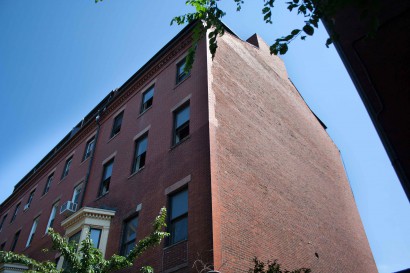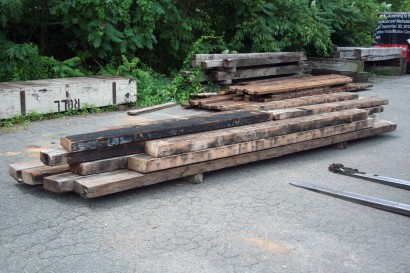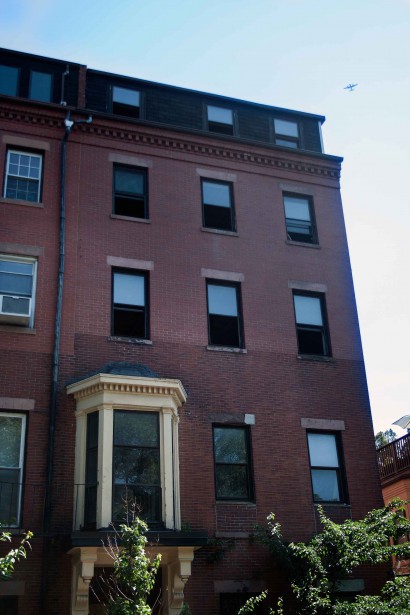
South End, Boston, MA ~ 1893
A classic South End brownstone, One Hanson Street was a tremendous source of reclaimed wood floor joists. The building, which rests at the end of a row of connecting wood frame and brick façade residences, abuts one of the Hanson Street alleys between Tremont and Bond streets. Our best guess suggests the 4,410 square foot building was constructed sometime before 1893, along with other similar homes on the street. Today, the four-story home is being gut-rehabbed into apartments.
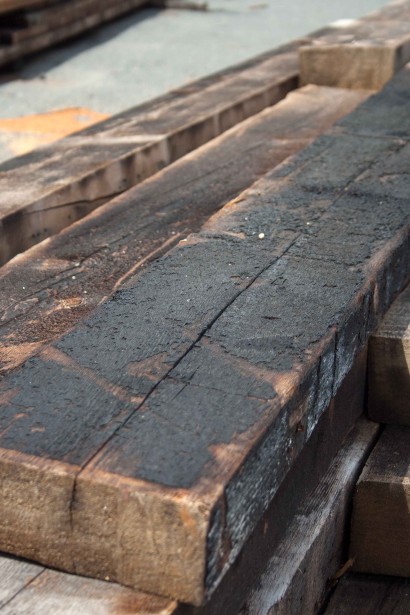 The building was framed in typical all-wood fashion, with a mixture of white pine, spruce, and fir being used for the floor joists, most of which was likely virgin timber sawn in northern New England or the upper midwest. As good material to re-saw into bench stock, dimensional lumber, and skip-planed spruce flooring, Longleaf was excited to salvage as many of the pieces as were recoverable. We noted many of these hand-hewn timbers as charred when they arrived in our Cambridge yard, suggesting that the building had burned at one point in its history.
The building was framed in typical all-wood fashion, with a mixture of white pine, spruce, and fir being used for the floor joists, most of which was likely virgin timber sawn in northern New England or the upper midwest. As good material to re-saw into bench stock, dimensional lumber, and skip-planed spruce flooring, Longleaf was excited to salvage as many of the pieces as were recoverable. We noted many of these hand-hewn timbers as charred when they arrived in our Cambridge yard, suggesting that the building had burned at one point in its history.
Although many similar structures exist in the South End, One Hanson boasts a relatively colorful early history. Residents of note include Mrs. B.H. Goodall, C.S.D., a Christian Science doctor and graduate of the Massachusetts Metaphysical College. In 1893, Mrs. Goodall held office hours in this building and offered free consultations in the practice of Christian Science mind-healing.
Soon after, in 1907, Dennis E. Coleman paved Hanson Street between Tremont and Shawmut Avenue as a part of a $975.00, 17-day contract. This improvement to the street may have laid the way for future educational use of one floor, which appeared circa 1913.
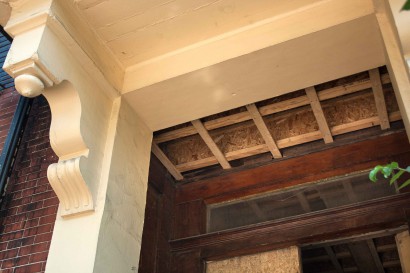
The wood recovered from this job is steeped in New England history. For us, interacting with local religious, economic, and educational culture while milling and recycling this reclaimed material is a major reason we do what we do. We’re excited to recycle this lumber into its next century of service.
Our photographs of the salvage process:

